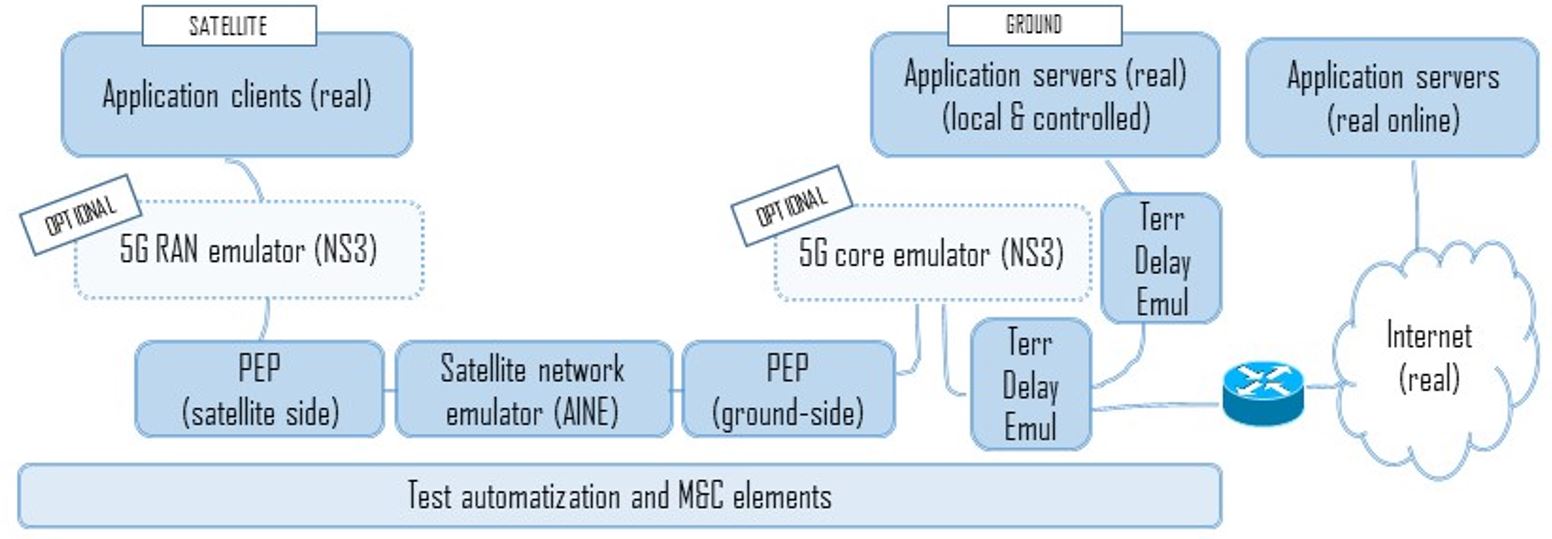-
StatusOngoing
-
Status date2020-07-06
-
Activity Code1D.019
QUIC is a new encrypted-by-default Internet transport protocol that accelerates HTTP traffic and which has the intention to eventually replace TCP. Originally proposed by Google, the IETF is now actively pursuing work to define and standardize a series of RFCs for the first IETF QUIC transport protocol.
Since QUIC transport fully encrypts all transport protocol headers and authenticates the endpoints of a connection, currently widely deployed Performance Enhancement Proxies (PEP) can no longer be used to improve TCP performance.
The real interactions of QUIC using a satellite service have not been fully explored yet. The project objectives are to identify the root causes of any shortfalls in performance of specific QUIC mechanisms, propose changes to the specification, and evaluate the new proposals using a real-time emulation test bed used already for the MTAILS project [LINK MTAILS PROJECT]. The results of this work are contributed as code patches, presentations and direct contributions to the IETF, primarily targeting the QUIC Working Group.
Initially, focus is on QUICv1, where there is still an opportunity to influence standardisation work. After its standardisation, work shall focus on satellite-specific enhancement to be included in QUICv2.
Influencing the QUIC standardization process requires a good knowledge of the IETF structure and the standardization processes. Additionally, experience has shown that it is convenient to attend regular IETF standards meetings, as this advances the impact with industry and provides opportunities to receive feedback on research. This is especially important considering that the satellite industry represents only a minor stakeholder within the much larger Internet community participating in the QUIC standardization process, represented by Google, Apple, Microsoft and the like.
As an increasing proportion of satellite communication now rely on internet protocols, and with a growing desire for more secure communications, influencing the development of the QUIC protocol to be more efficient over satellite is key to maintaining and growing satellite’s role in future communications networks. The project provides the following benefits:
- Influence IETF QUICv1 specification in terms of wording and protocol definition, so that it takes into account the needs and particularities of satellite systems as much as possible and does not place unnecessary restrictions.
- Provide satellite-optimised extension in QUICv2, which can be crucial for the performance of satellite systems in future integrated terrestrial-satellite 5G architectures. The opportunity to influence the design of the interaction between QUIC and the network path it uses largely appear in in the initial part of the project as topics are prioritised for QUICv2.0 and new techniques are proposed, analysed and incorporated into the specification in 2021.
- Raise awareness within the satellite community of the potential for QUIC, and the implications for future Internet traffic using a path that includes a satellite link. This will help them address the future development of Internet functions in satellite equipment.
The study addresses various areas for potential improvement of the QUIC protocol:
- There are expected to be a set of issues related to startup and initialization of the QUIC sender. Some issues, such as ramp-up to the available capacity are known, but have not been addressed in QUICv1 and therefore solutions require exploration before they can be proposed for consideration in the QUICv2 specification.
- Asymmetry of Capacity. This includes policies for acknowledgement generation (identifying equivalent policies to PEP ACK methods) that are intended to be a part of QUIC.
- Congestion-control and Recovery. The project is seeking to ensure that QUIC implementations are not adversely impacted by the characteristics of a satellite link.
Additionally, a set of new additional features have been identified as potential new features for QUICv2 (e.g. Multipath and the impact of non-congestive packet loss and mitigation using FEC). A preliminary study is proposed focusing on the evaluation of the applicability of these techniques to Satcom systems from the follow on of the standardization recommendations.
In order to evaluate QUIC performance and assess improvements in a realistic environment, the project extension re-uses the test bed developed in the MTAILS project.
This test bed features two emulators: a satellite emulator (based on AINE tool [Link AINE BROCHURE], implementing bandwidth on demand (BoD) assignment protocols and applying satellite delays) and an optional 5G backhaul emulator. Connected to the emulators, we have commercial Performance Enhancement Proxies appliances (performing TCP acceleration and GTP tunnelling when needed), as used in most satellite systems, and, finally, the application clients and servers in real and locally controlled scenarios. These clients / server run the existing QUIC implementations.

The project is expected to last 19 months and is structured around two parallel tasks.
A first task identifies, defines and evaluate appropriate mechanisms to improve the performance of QUIC when used with paths that include a satellite link. As part of this task, a test campaign is carried out, focusing on specific use cases to foster adoption and stakeholder involvement.
The second task focuses on supporting the standardization of the identified QUIC mechanisms through the IETF, by participating in IETF Hackathons and QUIC WG meetings. It also supports dissemination activities.
Milestones of the project are closely linked to IETF plenary meetings and review project contribution to these meetings.
Kick-off has been held and the first milestone has been completed successfully. Tasks related to QUICv1 mechanism analyses and evaluation with the MTAILS test bed are on-going and the project has already contributed to the IETF QUIC mailing list and workgroup meetings. The project is expecting to participate in the next IETF plenary (online) meeting, which will be held in July 2020.



